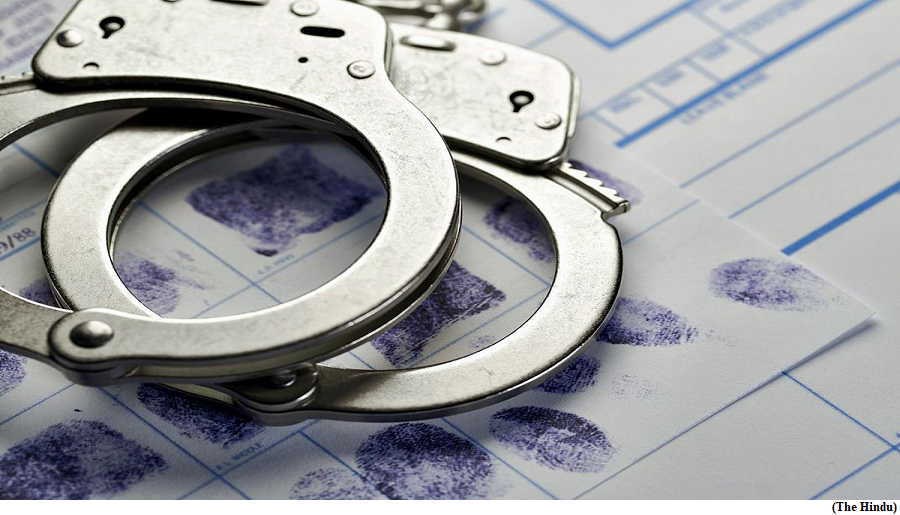Why will police stations install DNA systems? (GS Paper 3, Science and Technology)

Why in news?
- In April 2022, the Criminal Procedure (Identification) Act (CrPI) was passed by Parliament.
- The Act enables police and central investigating agencies to collect, store and analyse physical and biological samples including retina and iris scans of arrested persons. The rules that would govern the Act were notified in September 2022.
SOPs:
- The Act is yet to be implemented fully as the National Crime Records Bureau (NCRB), the nodal agency, is still preparing the guidelines and Standard Operating Procedure (SOP) to implement the legislation.
- The NCRB operates under the Union Ministry of Home Affairs (MHA).
- Though the Act and rules do not distinctly mention collection of DNA samples and face-matching procedures, in subsequent meetings with State police officials, the NCRB has said that these measures will be rolled out in around 1,300 locations across the country.
Why was the legislation brought in?
- The CrPI Act repealed the British-era Identification of Prisoners Act, 1920 whose scope was limited to collecting and recording finger impressions, footprint impressions and photographs of certain category of convicted persons and impressions of non-convicted persons on the orders of a Magistrate.
- The new Act made provisions for the use of modern techniques to capture and record appropriate body measurements.
What is the role of the NCRB?
- The NCRB has been entrusted with the task to “store, process, share, disseminate and destroy records of measurements.”
- Impressions taken at any police station will be stored in a common database maintained by the NCRB. The database could be accessed by authorised police and prison officials across the country.
- The NCRB will prescribe the specifications of the equipments or devices to be used for taking measurements in digital and physical format, the method of handling and storing measurements by the State police in a format compatible with the NCRB database and also the information technology system to be used for taking the measurements.
- Police and prison officials have been authorised to take measurements and the Act expanded the scope to also allow any person skilled in taking the measurements or a registered medical practitioner or any person authorised to take such measurements. The records are to be stored for 75 years.
What is the status on the ground?
- Police across States have been trained to record finger impressions through the National Automated Fingerprint Identification System (NAFIS).
- However, the iris scanners and devices that would enable capturing of DNA and facial-recognition systems are yet to be provided.
- NAFIS, also under the NCRB, is a separate project that was launched in 2022. It assigns a unique ten-digit National Fingerprint Number (NFN) to all suspects arrested by the police. State police have their own fingerprint database.
- NAFIS integrates the data on a common platform, enabling the police to run a countrywide search to match fingerprint impressions lifted from a crime scene.
- NAFIS workstations are operational in many States.
What are the challenges?
- When the Bill was being debated in Parliament, Opposition members argued that it violated fundamental rights, including the right to privacy. With plans to include DNA samples and facial-recognition technology, questions arose about the protection of such data.
- Though the rules state that measurement of persons detained or arrested under prohibitory and preventive sections of law are not to be recorded, not many officers are aware of it.
- The rule states that unless a person is booked under prohibitory and preventive sections that are clubbed with other serious criminal charges, the measurements will not be stored in the system.
- It takes the onus of destruction and disposal of records of an individual from the central database in case a person has been falsely implicated in a crime or has been acquitted by the court. For such a disposal/destruction, the request will have to be made to the nodal officer.
Onus for destruction of data:
- The onus for destruction of data in this 75-year time period has also been placed on the people whose data has been collected. This would impact people from sections of society who do not have access to the law and would therefore be unable to apply for deletion.
- The provision should be read in terms of the Right to be Forgotten and should not be at the mere discretion of the Nodal Officer.
Gaps:
- The type of DNA samples that could be collected by the police have not been defined yet.
- The handling DNA sample requires proper training. The storage is also a concern.
- It is compulsory in offences registered under the Protection of Children from Sexual Offences (POCSO) Act. However, what is its scope in other crimes such as cheating and snatching is yet to be spelt out clearly.
- The connectivity is a huge problem and police in smaller States have been unable to fulfil the requirement of secured Internet lease lines.
Misuse of data:
- In meetings with the States, the NCRB has cautioned against the misuse of the database by ensuring identification and deployment of appropriate safeguards allowing only designated officials to access the data in real time.


